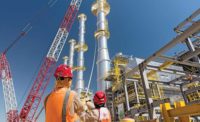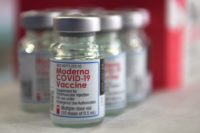Major oil-and-gas companies are dispatching battalions of scientists, engineers and marketers to squeeze profits from the tightest project margins, often against fierce competition. Many firms look to get an edge through innovations in process and distribution design, even when crude-oil prices are low and petroleum-sector capital spending is down. Often, it’s the ongoing small tweaks to a refinery or pipeline system that improve yields and reduce costs.
For now, oil-and-gas engineering giant Stantec, Edmonton, Alberta, says clients are mostly pursuing this kind of work. “The most common design work being commissioned by oil-and-gas producers and distributors through the downturn in prices are projects that create operational efficiency and improve reliability,” says Kirk Morrison, executive vice president. “These are usually called capital maintenance and asset integrity, and there are a fair number of midstream capital projects which involve processing and moving specific liquid streams.”
In a recent earnings call, Fluor CEO David Seaton said the volume of oil-and-gas-sector engineering projects has increased, but the average scale has diminished significantly. “We’re getting a lot of smaller studies. Is there a simpler way to do the project? What design codes would be used? Would it be standard design codes or company-specific design codes?”
Well integrity is increasingly important, too, says Richard Kuprewicz, president of Accufacts, a Bellingham, Wash., engineering consulting firm. Several pipeline disasters in the U.S. and Canada have put safety and risk management at the forefront of midstream design programs, says the former lead of Alaska Anvil Corp.’s process engineering team and project manager for ARCO Oil.
The Pipeline Hazardous Materials and Safety Administration is stepping up implementation of its proposed Integrity Verification Program, the most rigorous and widespread pressure-testing mandate for pipelines ever established. “Designers are important to pipeline integrity because a properly designed pipeline eliminates crack threat,” Kuprewicz notes.
If the slowdown of the U.S. hydraulic fracturing boom has stalled petroleum- sector design work in this country, it is not hard to find hot spots abroad. In first-quarter 2016 financial reports, several contractors noted continued demand for design and engineering services in the Middle East.
Kuwait has banked $600 billion in surpluses since 2000, and its state-owned oil company recently announced a $110-billion spending program, which will include the development of a 615,000-barrel-per-day refinery, a clean-fuel project to upgrade two existing refineries and a platform for LNG imports.
“People are still spending money,” Seaton told investors and analysts. “We’ve won four packages on refineries in Kuwait. We’ve won two projects in refining in Mexico. We’ve won refining projects in the United States with Tesoro and some others. So, there’s a lot of spending going on.”
The market could see a rebound if an expected crude-oil price recovery occurs soon. U.S. Energy Dept. projections say the crude-oil price will increase to $77 per barrel by 2020, as pent-up demand and supply balance out.






Post a comment to this article
Report Abusive Comment